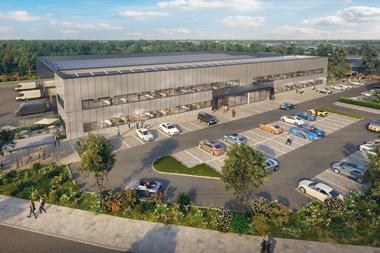Speculation that the Covid-19 crisis will herald the end of the office makes me think of Mark Twain’s quip that reports of his death had been greatly exaggerated. Just like Twain in 1897, the office has not died in 2020.

Some tech companies such as Twitter and Facebook have said, perhaps ironically given they are ‘social’ networks, that staff won’t necessarily return to the office as they embrace remote working. But for the vast majority of us (and certainly for me), the need for human interaction in our professional lives cannot be replaced by any online platform.
For architects and designers, this is even more clearly the case – we cannot collaborate with our partners if detached from our environment. The studio is still the best set-up to encourage collaboration, innovation, diversity of thought and general creative cross-pollination.
Not all creative work requires constant bouncing of ideas and reflection is important too, but I doubt that one can design great places from the confines of home.
This crisis is unlikely to herald radical change in architecture. But it should be a catalyst to consider the design of towns and cities with their modes of transport and public spaces differently; particularly as we reflect on what lockdown has taught us about loneliness and isolation, and the fact that fundamentally, as humans, we are social animals.
I would like to see a shift towards a more holistic offering centred around local human connection and wellbeing. This means creating spaces that put more emphasis on the natural world; engagement with nature has been shown to improve happiness and wellbeing. This can apply to offices, homes or streets, with nature at the heart of designs.
It also means fostering culture: offices where team collaboration is easy, homes where neighbours can be close, and public spaces where local businesses and community events can thrive. Being outside, looking at buildings, being among people and understanding their behaviour is a stimulus I need to design good places to live, work and play; it cannot be done from home.
All our town and city workers should have this opportunity to be inspired and comforted by the places they inhabit. This can be achieved if we focus our recovery on creating places built around social interaction, with offerings that are highly tailored, flexible and designed to draw the community in. This should include creating high-quality, residential-led communities through purpose-built developments with the range of offerings urban hubs provide. Later-living schemes, build-to-rent and co-living fit this concept.
Designing places like this will foster wellbeing and create more resilient towns and cities. Offering a variety of mixed-use, community-led spaces provides investors with a range of income and creates places with a varied consumer base, so if a further crisis hits, they do not rely on the success of a single sector.
If lockdown has shown us anything, it’s how much we need a choice when it comes to interaction and collaboration, both for personal wellbeing and professional inspiration. We need to work in the best environments possible to enable creativity and collaboration.
Félicie Krikler is director at Assael Architecture
































No comments yet